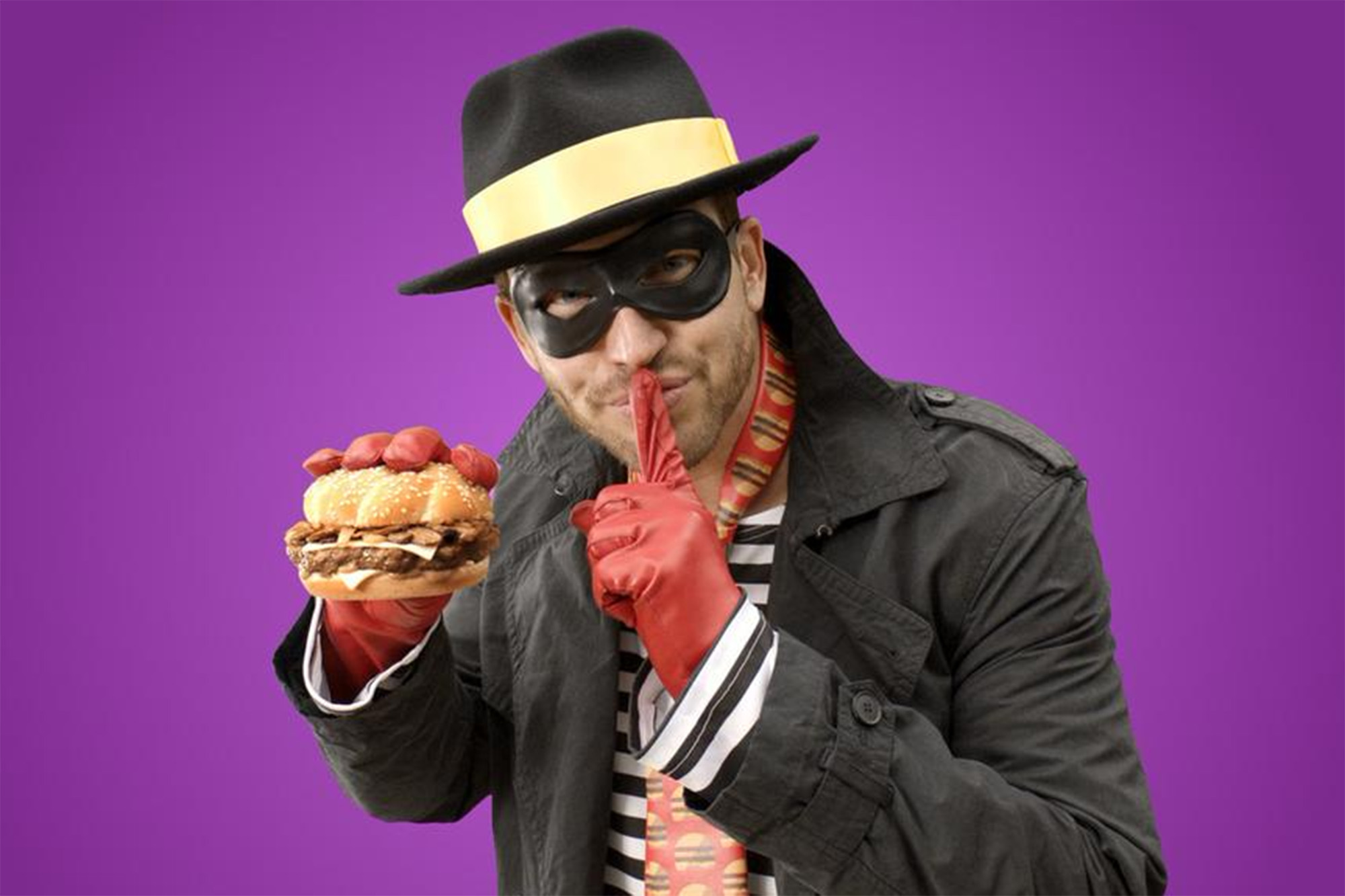Of Hamburglars and Kings: Is it Time for McDonald’s to Ditch the Fast Food Mascot? (Op Ed)

source: New York Post/McDonald’s
McDonald’s reinvention of the Hamburglar recently made waves throughout the advertising industry (and of course, on Twitter) after the chubby cartoon bandit was reintroduced as a grown man, complete with a hipster haircut and a family. But if the initial reaction is any indicator, McDonald’s attempt at brand revitalization has fallen well short of the mark.
Reaction to the Hamburglar’s new look has been mixed, to say the least. While Adweek was quick to find Twitter users who praised the new Hamburglar as a hot hipster, other publications were not as kind.
McD's is after me (apparently, so is my wife)! Tweet #RobbleRobble to keep them off my trail.
https://t.co/JBVThrmHir
— Hamburglar (@McDonalds) May 12, 2015
“McDonald’s Unveils a New Hamburglar, and He Looks Like He’s Having a Midlife Crisis” and “McDonald’s Hamburglar is Now Some Suburban Dad-Bro” are just a few of the headlines contributing to the increasingly negative discussion over whether or not the new mascot is a handsome hunk or a creepy crook. So, judge for yourself…
Of course, none of this happened just because McDonald’s thought it would be a fun idea. As the fast-food giant has seen continually slumping U.S. sales and a need to cultivate a new image—particularly that of “a modern progressive burger company,” says McDonald’s Brand & Marketing VP, Joel Yashinsky–it seems that giving modern makeovers to long-retired mascots is a necessary part of the strategy.
But is it really?
Many pundits have argued that the Hamburglar’s update is a sign that McDonald’s is trying—and failing—to become culturally relevant again. The redesigned Hamburglar brings to mind another fast food mascot who underwent his own transformation—Burger King’s “The King”. While versions of the mascot had appeared as early as the 1950s, it was in 2004 that the fast food chain introduced its updated character—a man wearing a large plastic mask and crown.
Much like the Hamburglar’s recent design update, the new King generated a mixed response upon his introduction. The mascot quickly became mocked as “the Creepy King”, and executives later blamed it for hurting sales among women and children. Brand sales remained stagnant while the mascot was used, and as a result, The King was retired in 2011 aside from his recent controversial appearance in Floyd Mayweather, Jr.’s entourage.
The recent trend for fast food chains has been to phase out mascots in favor of menu-based marketing. So, why does McDonald’s feel that updating a retired mascot would be a wise marketing venture? The chain’s rising competitors (such as Chipotle) do not have any type of mascot at all, and it’s been four years since TIME proclaimed “The (Burger) King is Dead.” Additionally, the Taco Bell chihuahua hasn’t been seen since 2000–when it was “fired” after the company experienced a significant drop in sales. So, is it time for McDonald’s to retire its brand mascots altogether?
Wait, is this who we think it is??!
https://t.co/rc9xhQrAUi
— Hamburglar (@McDonalds) May 6, 2015
“Brand mascots have always worked best when they’ve been a relatable voice for the brand, but what we’ve already seen of the Hamburglar doesn’t look like he’ll fit the bill,” says Lucas Miller, Social Media Manager at content marketing agency Fusion 360. “If McDonald’s turned the new Hamburglar into a Mayhem-type character, I think they could pull it off—successful mascots like the Aflac Duck even have their own following on social media. But based on what we’ve seen so far, it seems like they’re trying to combine nostalgia and a ‘modern look’ without any real thought for how he’ll actually contribute to brand positioning.”
The majority opinion over the revised Hamburglar seems to indicate that he will likely go the way of The King–off to a quiet retirement, remembered only in internet memes and advertising lore of what not to do when trying to rejuvenate a brand. Exhibit A…
Announced changes include a darker, edgier Hamburglar wearing a Guy Fawkes mask http://t.co/tii77ilu1U pic.twitter.com/1OeOlVJmcD
— The Onion (@TheOnion) May 6, 2015
The Fate of The Hamburglar
The new Hamburglar alone will not be able to turn McDonald’s sales around. However, other recently announced initiatives, such as simplifying the drive-through menu, increasing the number of mid-priced options, testing the possibility of making breakfast available all day and even adding kale to the menu in some locations seem to indicate that the company is ready to undergo a significant overhaul—albeit one that would seem more significant if the Hamburglar had been left out of the picture entirely.
Indeed, the presence of the character in McDonald’s turnaround efforts seems to indicate that while the company is willing to make changes, it isn’t entirely willing to stray from formulas that worked in the past. The problem for McDonald’s is that 2015 is not 1985. This time, the Hamburglar needs to stay retired for good.
The guest post was submitted as an Opinion Editorial by Kevin Johnson through our awesome submission form.

